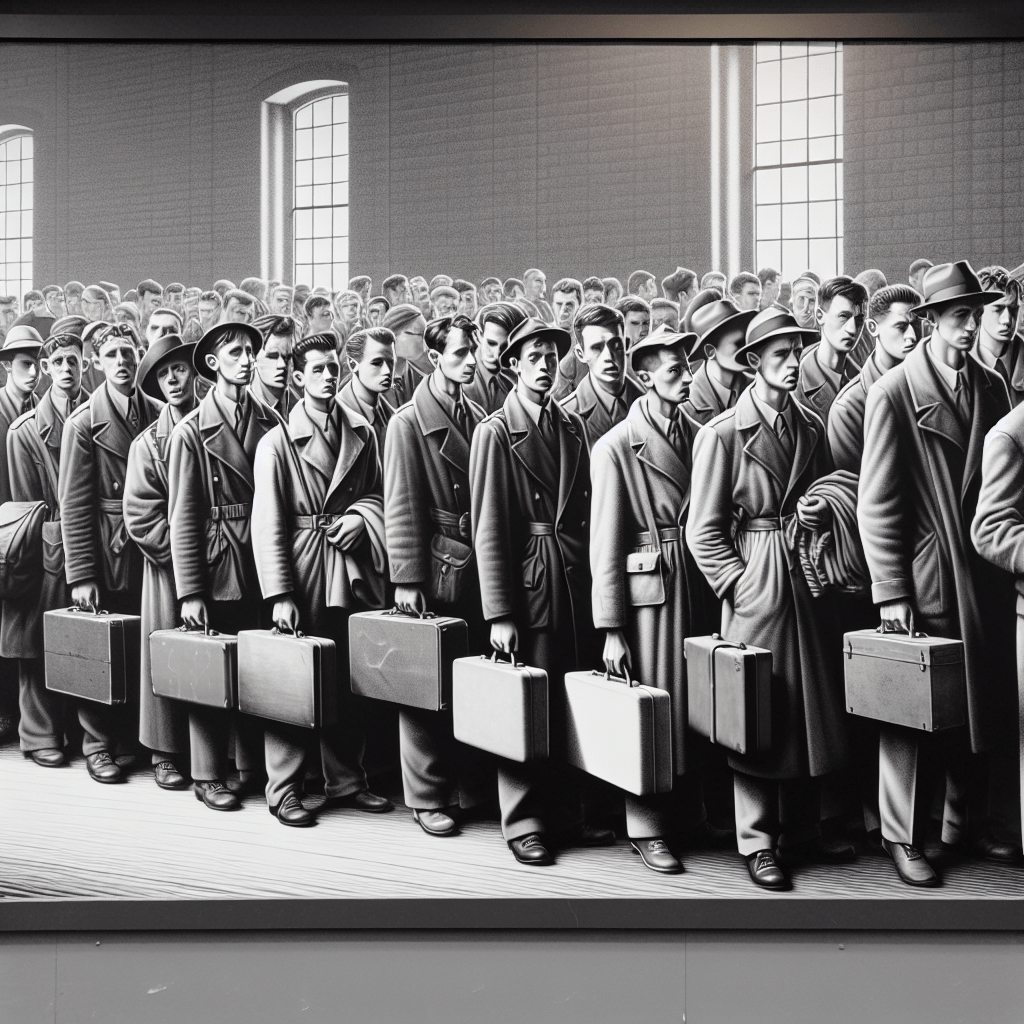## Conscription in the United Kingdom: A Historical Overview ##
Conscription has played a pivotal role in shaping the military and social landscape of the United Kingdom throughout its history. While not a current practice, the periods during which conscription was enforced left indelible marks on the generations that experienced them.
The Origins of Conscription in the UK
The concept of mandatory military service, known as conscription, dates back centuries in British history. However, it was not formalized in modern practice until the 20th century. In earlier periods, Britain relied on a mixture of volunteer soldiers and press-ganged individuals, particularly for its navy.
The Introduction of Conscription
During World War I, as voluntary enlistment began to wane and the scale of the conflict grew, the UK was compelled to introduce conscription with the Military Service Act of 1916. This required single men aged 18 to 40 to enlist, and a year later, it was expanded to include married men.
World War II and Conscription Changes
Conscription evolved with the onset of World War II under the National Service (Armed Forces) Act 1939, initially requiring men aged between 18 and 41 to serve in the military. Women were also called upon to contribute to the war effort in various capacities, albeit not directly in combat roles.
Post-War National Service
Following World War II, conscription continued in the form of National Service, where young men were required to spend time serving in the armed forces. The terms dictated that men between the ages of 17 and 21 served for an 18-month period and remained on the reserve list for four years thereafter.
National Service Comes to an End
By 1960, National Service began to phase out as tensions from immediate post-war conflicts eased. The last conscripts were called up in 1960 and the requirement officially ended in 1963 when the last National Servicemen were discharged.
Modern-Day Implications of Past Conscription
While compulsory service is no longer an aspect of British life, its legacy remains through commemorations, memorials, and discussions about military ethics and policy making. The experiences of those who lived through conscription have fueled debates on national defense and societal obligations.
Conscription’s Place in UK Policy Today
Today, the topic of conscription occasionally reappears in public discourse especially during times of military conflict or perceived threats. However, there has been no serious political movement toward re-establishing compulsory military service, as volunteer professional forces have been deemed sufficient for current defense needs.
The Future of Military Service in the UK
As technology advances and new forms of warfare emerge, there are questions about what future military service might look like and whether there could ever be a need or call to reinstate conscription. These themes are often explored by defense analysts and policy strategists as they consider long-term planning for national security.
### Notes ###
Image description: A black-and-white photograph showing long lines of young British men from the mid-20th century awaiting registration for conscription during WWII. They are seen carrying suitcases and personal items, emblematic of those called up for National Service.

